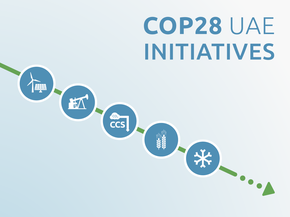Country summary
Overview
Russia’s illegal invasion of Ukraine has added new urgency to European climate action. The EU is now at a turning point in terms of energy and climate policy: it can either replace dependency on fossil fuel imports from Russia with new reliance on other countries, or take decisive action and switch to domestic renewable sources of energy.
The REPowerEU plan, put forward by the European Commission on 18 May 2022, constitutes a step in the right direction. The plan includes a proposal to increase the share of renewables in final energy in 2030 from 40% to 45% and to reduce final energy consumption to 750 Mtoe instead of the 787 Mtoe included in the “Fit for 55” package from July 2021.
Overall, depending on the changes in the energy mix and the potential shift from gas to coal, this would result in emissions of between 57-58% below 1990 levels, excluding LULUCF, and move the EU between 4-5 percentage points away from 1.5°C compatibility — if complemented with substantially increased international climate finance. Emission reductions including LULUCF would be between 60-62%. To facilitate global climate action, the EU should quantify the new targets in terms of emissions reductions and submit a new NDC before COP27.
However, the REPowerEU Plan also has significant room for improvement. It includes a proposal to spend EUR 10 bn on new LNG and fossil gas pipeline infrastructure to reduce EU dependency on Russian gas. An additional EUR 2 bn is to be spent on switching fossil gas power plants to coal. Some of these investments would be funded from the sale of additional emissions allowances in the framework of the EU Emissions Trading Scheme, which would weaken the efficacy of the EU’s major decarbonisation tool.
Another worrying development is the reaction of some EU Member States which, in response to increasing fossil fuel prices, are providing significant and wholesale subsidies for fossil fuel consumption. Before the outbreak of the war in Ukraine, the European Commission sought to classify fossil gas and nuclear as “sustainable” sources of energy under its investment taxonomy. Such measures not only undermine the EU’s credentials as a global leader in climate action, but would also result in higher levels of stranded assets and take too long to have any meaningful impact on the current situation in terms of increasing energy security.
Apart from its disastrous impacts on the Ukrainian people, Russia’s unprovoked invasion of Ukraine poses a massive challenge to the EU’s energy system. However, the significant increase in the prices of fossil fuels should not be used as an excuse to shift EU’s energy dependency but to reduce it using renewable energy sources and energy efficiency measures. Renovation of the most energy inefficient buildings is also the best way to reduce energy poverty. However, it requires an unbureaucratic support mechanism and needs to be implemented in a way that does not require high upfront investment for homeowners.
While the REPowerEU Plan offers numerous elements that would reduce EU’s energy dependency and emissions, the increased investments in fossil gas and the proposal for a limited shift from gas to coal pose a major threat to EU’s climate ambition. Instead, the EU should further accelerate its decarbonisation to remove its dependency on imported fossil fuels.
Increasing the goal for renewables to at least 50% and reducing final energy consumption to no more than 700 Mtoe in 2030 should be the starting points for the negotiations between the Council and the European Parliament.
The CAT rates EU’s climate targets, policies, and finance as “Insufficient”. The “Insufficient” rating indicates that the EU’s climate policies and commitments need substantial improvements to be consistent with the Paris Agreement’s 1.5°C temperature limit. The EU’s 2030 emissions reduction target and its policies and action are consistent with 2°C of warming when compared to modelled domestic pathways. The EU is also not meeting its fair-share contributions to climate action.
To improve its rating, the EU should strengthen its emissions reduction target to at least 62% (excl. LULUCF) below 1990 levels, adopt policies necessary to reach this goal, and significantly increase its support for climate action in developing and least developed countries.
We rate the EU’s policies and action as “Almost sufficient”. The upper bound of our policies and action emissions projection range is based on policies reported by Member States in March 2020, which would result in an emissions reduction of around 36%, even after factoring in the effect of the pandemic. The bottom end of the range is based on policies adopted at the EU level, which would result in reducing emissions by around 47%. Due to the delay in reporting on policy implementation by Member States, we consider the lower bound to be more likely and have based the CAT range on this estimate.
The policies and actions currently in place are not enough to meet the EU’s emissions reduction target of “at least 55%” by 2030 below 1990 levels. However, the EU is currently discussing a number of policy initiatives which, if adopted and implemented by Member States, could result in emissions reductions overachieving the 55% reduction target.
In addition to implementing policies adopted at the EU-level, Member States also need to adopt additional measures. This especially concerns the coal phase-out by 2030 at the latest and phasing out fossil gas soon afterwards. Instead, some countries are lobbying for EU funds to be spent on the development of fossil gas infrastructure. The addition of fossil gas as “transition technology” into the EU taxonomy is not 1.5°C compatible. Gas remains a fossil fuel and must be phased out: it is not a transitional option.
The full policies and action analysis can be found here.
The EU’s goal of reducing emissions by at least 55% below 1990 levels by 2030 (including LULUCF), submitted in December 2020, is a step in the right direction, especially as it opens the possibility of meeting a 1.5°C compatible goal. This could be the case if the adopted measures allow the EU to significantly exceed the 55% emissions reduction target.
The renewable energy and energy efficiency targets tabled by the Commission in the May 2022 REPowerEU Plan, especially if ramped up during the subsequent legislative process by the European Parliament and the Council, create a viable opportunity for making EU’s domestic target 1.5°C compatible.
Due to the inclusion of LULUCF emissions, the EU’s binding emissions reduction target cannot be directly compared with its 2015 target. When accounting for a sink of 225 MtCO2e—the maximum amount that, according to the European Climate Law, can be used to account for meeting this goal—the goal is weakened to 52.8%. However, if intra-EU aviation and navigation is excluded from this goal, it increases to around 54%.
Reaching the goals proposed by the European Commission’s REPowerEU Plan of increasing the share of renewable energy in gross final energy consumption from 40% to 45% and reducing final energy consumption to no more than 750 Mtoe instead of 787 Mtoe suggested in the “Fit for 55” Package, would result in emissions reduction to between 57 and 58% below 2030. In the framework of the package, the Commission also proposed to increase the total LULCF sink to a least 310 MtCO2e, out of which only 225 MtCO2e can be accounted to meeting this goal. This creates an additional sink of 85 MtCO2e, which is not considered in this assessment. When combined with the renewable energy and energy efficiency targets proposed in the framework of REPowerEU proposal, it would result in emissions reduction by between 60-62%.
The CAT’s assessment of the EU’s total fair share contribution takes into account its emissions reduction target and its climate finance.
When measured against a fair-share emissions allocation, we rate the EU’s emissions reduction target as “Insufficient”. The “Insufficient” rating indicates that the EU’s fair share target in 2030 needs substantial improvement to be consistent with the 1.5°C temperature limit. Some of these improvements should be made to the domestic emissions target itself, others could come in the form of additional support for emissions reductions achieved in developing countries in the form of finance. If all countries were to follow the EU’s approach, warming would reach up to 3°C.
The EU’s international public climate finance contributions are rated as “Insufficient”. The EU has committed to increase its climate finance, but contributions to date have been low compared to its fair share. To improve its rating, the EU needs to ramp up the level of its international climate finance contributions in the period post-2020 and accelerate phase out of fossil finance.
The EU’s climate finance is not sufficient to improve the fair share target rating, and the CAT rates the EU’s overall fair share contribution as “Insufficient”.
We evaluate the net zero target as “Acceptable”. The EU’s climate neutrality goal performs moderately in terms of its architecture, transparency, and scope, with a regular review and assessment process. A provision for an intermediate target in 2040 is to be set following the Paris Agreement’s Global Stocktake, an exclusion of reductions or removals achieved outside of its territory, and clear analysis underpinning the target. At present, a clear separation of the contributions from emissions reductions versus removals is missing, although this is an element that is required of the forthcoming 2040 target.
The full net zero target analysis can be found here.
Further analysis
Latest publications
Stay informed
Subscribe to our newsletter




